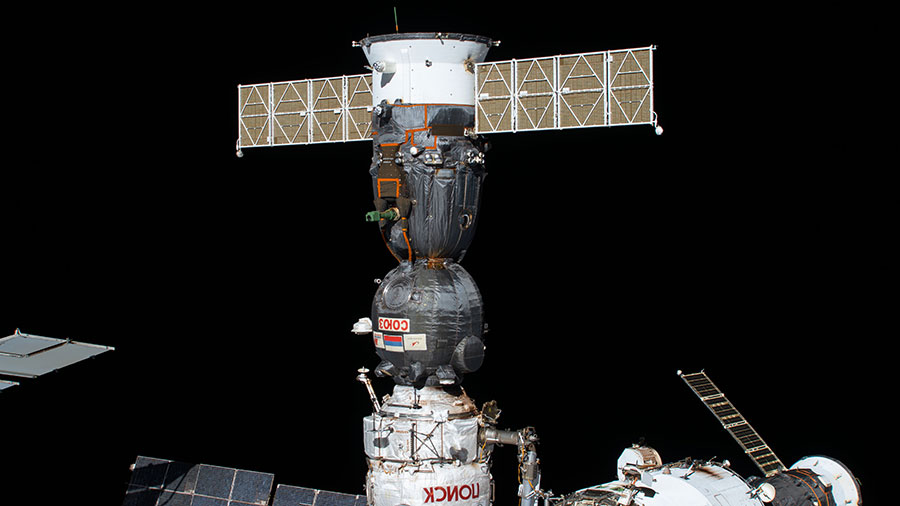Crew Packs for Landing While Studying Space Tech and Biology

The Expedition 63 trio is packing up and getting ready for its return to Earth as the International Space Station is orbiting slightly lower today. Meanwhile, advanced space science continues full speed ahead aboard the orbiting lab.
Commander Chris Cassidy of NASA is about to wrap up a 196-day mission in space with Roscosmos Flight Engineers Anatoly Ivanishin and Ivan Vagner. The Russian duo has begun gathering hardware and other items that will be packed inside the Soyuz MS-16 crew ship for return to Earth. The three-member crew will enter the Soyuz, undock from the Poisk module and parachute to a landing in Kazakhstan on Oct. 21.
Cassidy spent a busy Wednesday operating a range of science experiments investigating space technology, microbiology and botany. He started the day setting up the Avatar-X camera that seeks to demonstrate remote robotics that may inform the future of telemedicine. Next, he transferred microbe samples, shipped in a Cygnus cargo craft science freezer, that will be observed to learn how to control bacterial growth in space. Finally, Cassidy set up the Spectrum-001 hardware that will enable fluorescent imaging of protein markers and stress signaling in plants grown on the space station.
As the crew counts down to departure, Ivanishin worked on Russian power supply systems and checked radiation measurements. Vagner assisted Cassidy with the Cygnus science freezer work and checked on a pair of Russian studies looking at bone loss and space piloting techniques.
The space station is orbiting slightly lower after the docked Progress 75 spacecraft fired its engines for nearly seven minutes this morning. The “deboost” puts the station in the correct phasing for the docking on Oct. 14 of the Soyuz MS-17 crew ship carrying the Expedition 64 crew aboard.
from Space Station https://ift.tt/2SNIJMx
Comments
Post a Comment